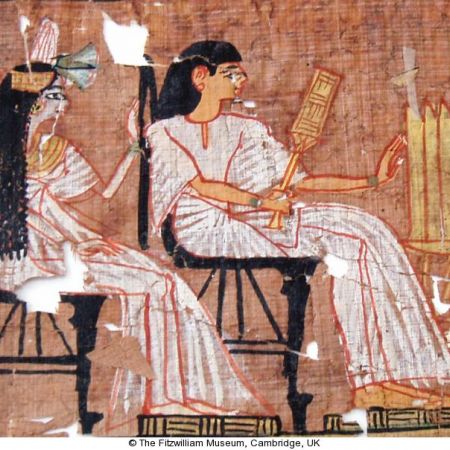The Egyptian civilisation and especially the myths and legends that surround it have captivated European audiences since the 19th centuries, and Egyptian artifacts have always been in high demand. Over the decades this interest has never declined, as more and more discoveries have been made and this unique and original civilisation has continued to atract more and more.
The Fitzwilliam Museum, England, is offering a new chance of discovering an important part in the history of Egyptian religion and thought, by hosting between the 19th of June - the 16th of September a special exhibition, titled "A passport to the Egyptian After-life: The Book of the Dead of Ramose". The Egyptian cult of the death is perhaps the most interesting part of the ancient people, at least for casual admirers, and the care with which they tended to their deceased, through careful, complicated and misterious rituals, not to mention the enigmatic mummies, is astonishing.
The British museum is presenting one of the most important part of these rituals, the so-called Book of the Dead, a collection of spells, incantations, rituals and instructions, which was to be placed in the tomb of the rich and feared, in order for them to travel safely into the fearfull void of the Afterlife. At first these rituals were written, in a specific order, on the linen shrouds that enveloped the mummy, and only in the latter centuries they were actual rolls of papyrus, many of them being discovered in Egypt.
The book chosen for the exhibition belonged to Ramose, who was a high rank official, who lived in the 13th century BC. This precious piece of history was discovered - perfectelly preserved - in 1922, in a tomb in Sedment, Egypt, by Sir William Flinders Petrie, a pretigious archaelogist. It is one of the best examples of these kind of writings, as this beautiful papyrus - which originally must have had almost 20 meters in length - is decorated with vivid scenes, depicting people, animals, plants. Painted with great talent, this colourful images also give an insight of life of the Egyptians at that time. This work of art has rarely been exhibited, as specialists fear that prolonged exposion to the light might damage it.

Also, the visitors have the chance of discovering how the papyrus was preserved and most important what the ancient Egyptians believed in, who ere the main deities, which where the customs and funeral rites.
Photo : fitzmuseum.cam.ac.uk
July 2007

































